
Logo Ottoman Png All our images are transparent. Goimages Bite
The Ottoman Sultanate (1299-1922 as an empire; 1922-1924 as caliphate only), also referred to as the Ottoman Empire, written in Turkish as Osmanlı Devleti, was a Turkic imperial state that was conceived by and named after Osman (l. 1258-1326), an Anatolian chieftain.At its peak in the 16th and 17th centuries, the empire controlled vast stretches including Anatolia, southwestern Europe.

Barewalls Ottoman Empire Coat of Arms Paper Print Wall Art (28 in. x 28 in
Every sultan of the Ottoman Empire had his own monogram, called the tughra, which served as a royal symbol. A coat of arms in the European heraldic sense was created in the late 19th century. Hampton Court requested from the Ottoman Empire a coat of arms to be included in their collection. As the coat of arms had not been previously used in the Ottoman Empire, it was designed following this.

Coat of Arms of the Ottoman Empire Tablolar, Bayrak, Akrilik resimler
Help Category:Sultanic coats of arms of the Ottoman Empire From Wikimedia Commons, the free media repository Subcategories This category has the following 2 subcategories, out of 2 total. * Greater sultanic coats of arms of the Ottoman Empire (26 F) P Pre-1882 sultanic coats of arms of the Ottoman Empire (4 F)
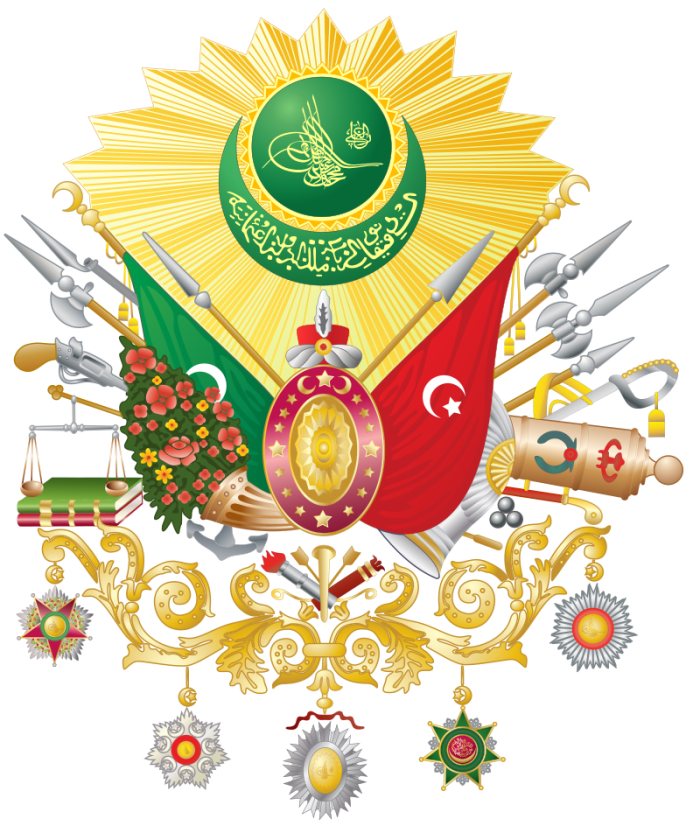
A History of the Ottoman Empire Owlcation
Create new Wikidata item Upload media Subcategories This category has the following 3 subcategories, out of 3 total. P Coats of arms of Phanariote families (8 C, 14 F) S Coat of arms of the Principality of Samos (6 F) Sultanic coats of arms of the Ottoman Empire (2 C, 4 F) Media in category "Coats of arms of the Ottoman Empire"

Coat of Arms of the Ottoman Empire by IudexArborensis on DeviantArt
Here is the meaning of the Ottoman Military Sign: Red flag on the right is the Turkish flag. Green flag on the left is the Sacred Standard of the Caliphate. Eliptical figure in the middle and the turban above it symbolizes the Ottoman dynasty as the leader (or caliph) of all the Muslims in the World.

Garterencircled coat of arms of Abdulmejid I, Sultan of the Ottoman Empire Ottoman empire
An Ottoman sword of state, used during inauguration ceremonies for sultans. The sword was refitted in 1876 CE for the planned inauguration of the Ottoman sultan Murad V (r. 1876 CE). The sword is comprised of a 17th Century CE Iranian steel blade with an 18th Century CE Indian jade grip. Decorated with gold and gilded brass mounts of 19th.
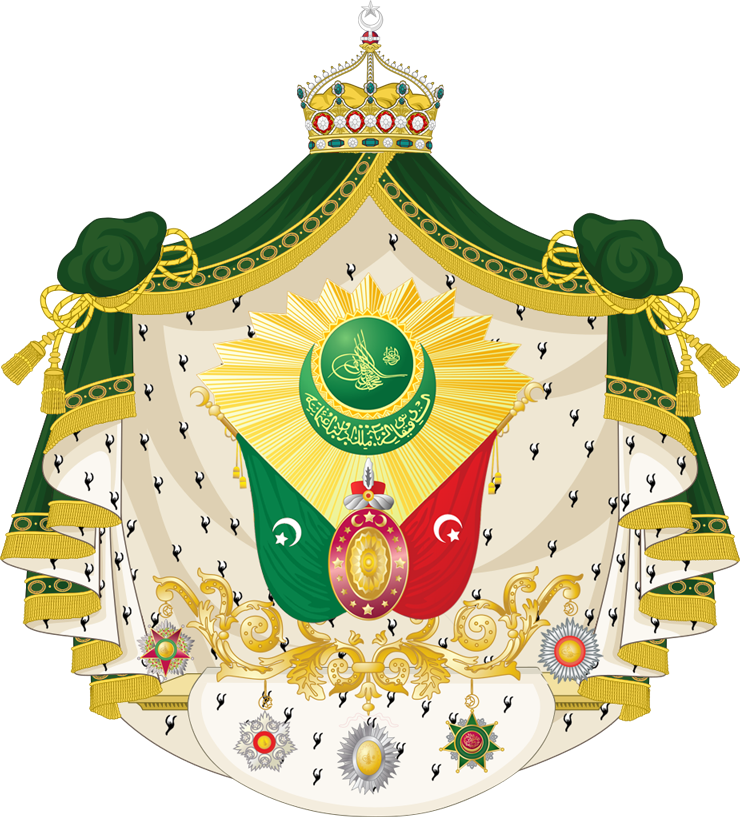
Ottoman Empire Coat of Arms (version 2) by Manalinger on DeviantArt
Coat of arms of the Ottoman Empire (1882-1922) Summary [ edit] This image shows a flag, a coat of arms, a seal or some other official insignia. The use of such symbols is restricted in many countries. These restrictions are independent of the copyright status. Licensing [ edit] Definition
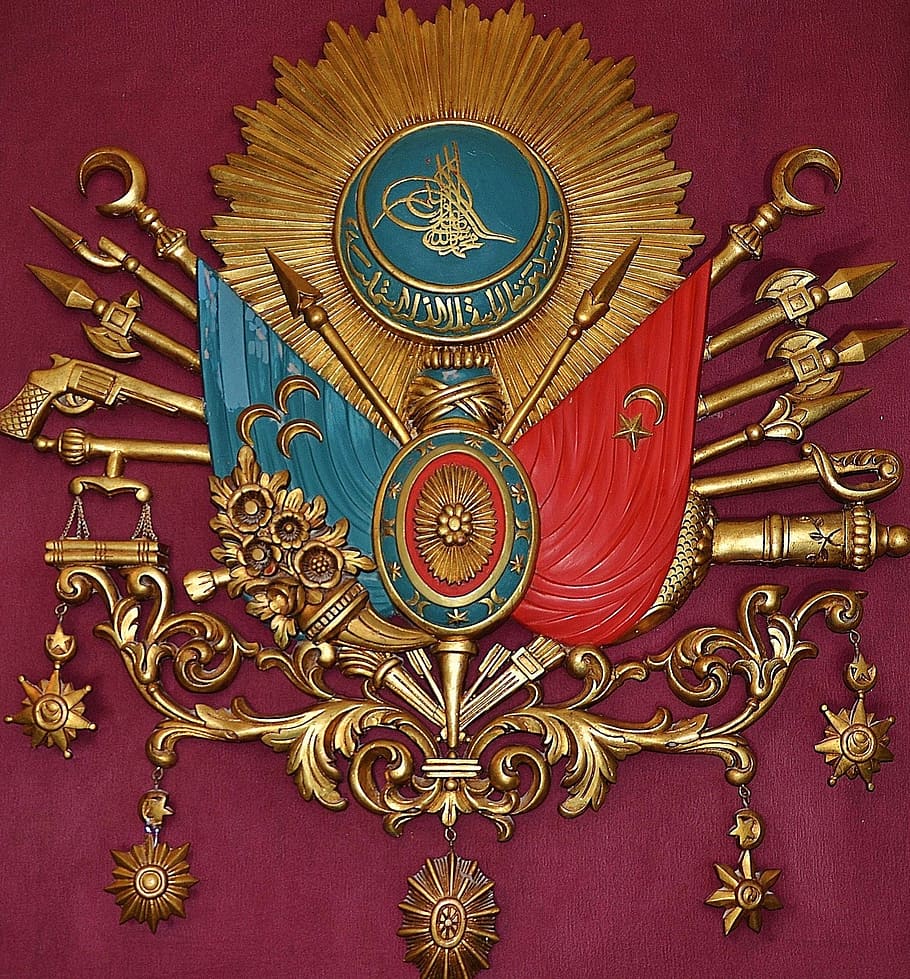
Free download HD wallpaper Coat of Arms of Ottoman Empire wall decor, historic, history
As such an imperial coat of arms had not been previously used in the Ottoman Empire, it was designed on this request, and the final design was adopted by Sultan Abdulhamid II on April 17, 1882. It included two flags: the red flag of the Ottoman dynasty with a star and crescent, and the green flag of the caliphate, largely obscured by a cornucopia.
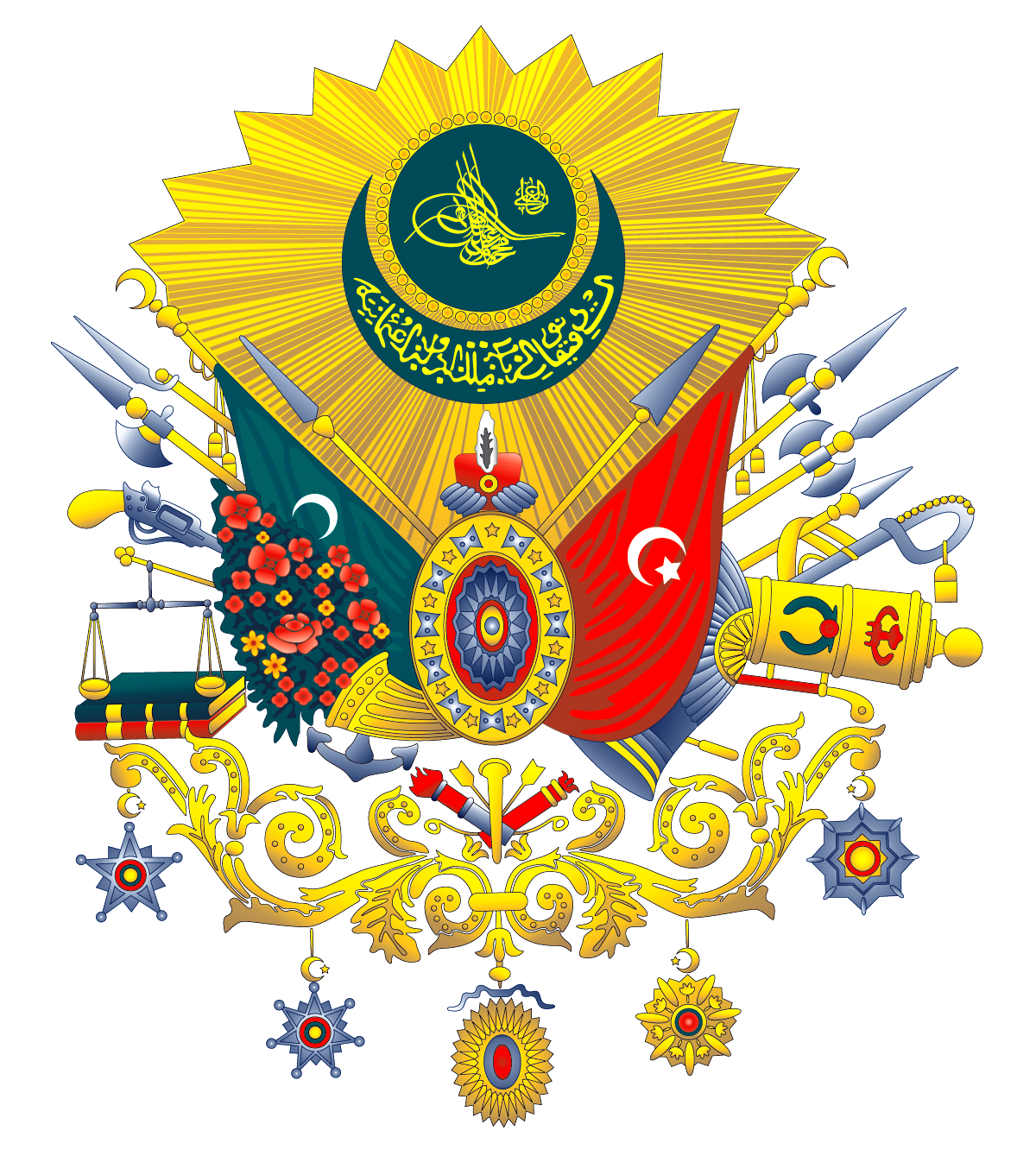
Mavi Boncuk Ottoman Coat of Arms
A coat of arms in the European heraldic sense was created in the late 19th century. Hampton Court requested from the Ottoman Empire a coat of arms to be included in their collection.

Ottoman CoatofArms, Ottoman Empire, 19th C.
The expression "Islamic arms and armor" is a term often somewhat restrictively applied to arms and armor of the Mamluk period (1250-1517) in Egypt and Syria, the Ottoman empire (ca. 1299-1922), the Near East, especially Persia, and those areas of India under Mughal rule (1526-1858).
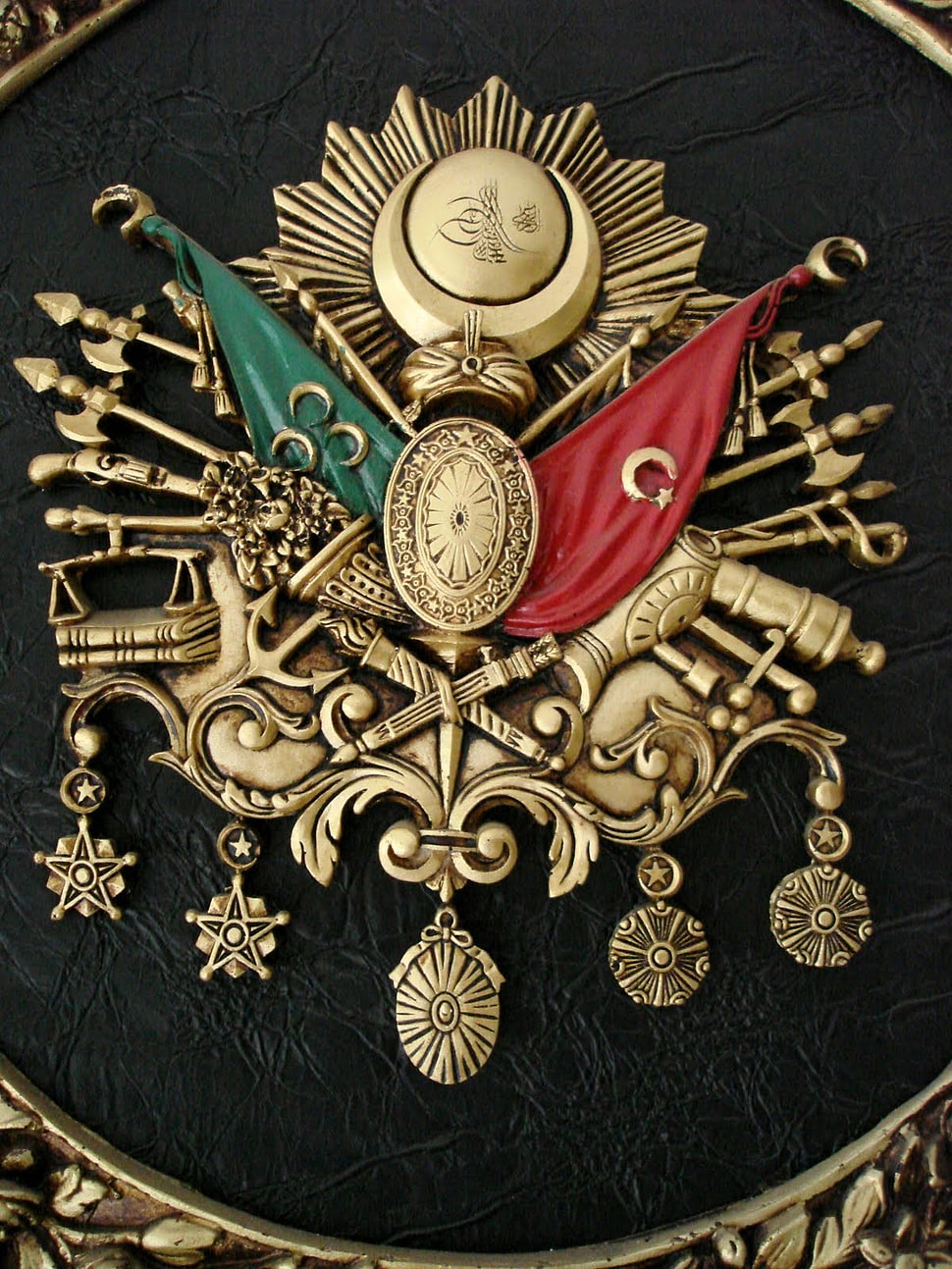
Coat Of Arms Of The Ottoman Empire decor, Ottoman Empire HD wallpaper Wallpaper Flare
The Ottoman Empire used various flags and naval ensigns during its history. The star and crescent came into use in the second half of the 18th century. A buyruldu (decree) from 1793 required that the ships of the Ottoman Navy were to use a red flag with the star and crescent in white.
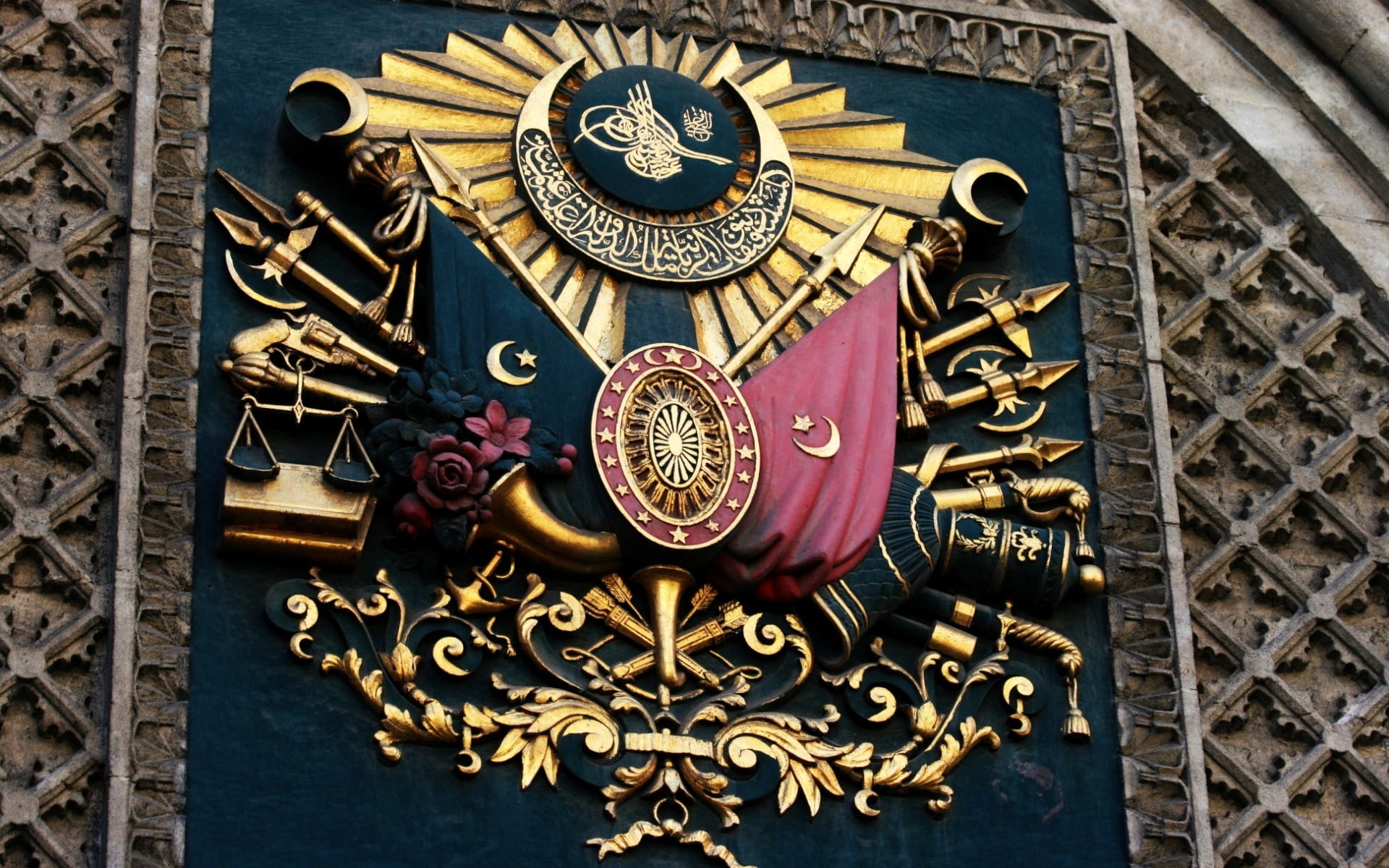
1080x1920 resolution Coat Of Arms Ottoman wall decor, Ottoman Empire HD wallpaper Wallpaper
The Ottoman cavalry sabre or kilij is the Ottoman variant of the Turko-Mongol sabers originating in Central Asia. It is designed for the mounted close combat preferred by the Turkish and Mamluke troops. It was a one-handed saber with a slight curvature enough to cut and thrust effectively; Sharpened back edge at the final section of the blade.

Coat of arms of the Ottoman Empire Ottoman Caliphate Ottoman dynasty Padishah, arma, android png
A coat of arms in the European heraldic sense was created in the late 19th century. Hampton Court requested from the Ottoman Empire a coat of arms to be included in their collection. As the coat of arms had not been previously used in the Ottoman Empire, it was designed following this request, and the final design was adopted by Sultan Abdul.

Ottoman Empire Coat of Arms (version 1) by Manalinger on DeviantArt
It is the Coat of arms of the Ottoman Empire: the 'Osmani Valtakunnan'. "Every sultan of the Ottoman Empire had his own monogram, called the tughra, which served as a royal symbol. A coat of arms in the European heraldic sense was created in the late 19th century. Hampton Court requested from the Ottoman Empire the coat of arms to be included.

Ottoman Empire coat of arms by ZinogreTamer on Newgrounds
File:Coat of arms of Ottoman Empire 1846.png: Author: User: Felipe Fidelis Tobias: Licensing . This file is licensed under the Creative Commons Attribution-Share Alike 4.0 International license. You are free: to share - to copy, distribute and transmit the work; to remix - to adapt the work;

Osmanlı coat of arms Turkish flag, Ottoman empire, Coat of arms
[2] Hanging beneath the lower flourish are the medals of five Ottoman military decorations. In the main image, from left to right they are: the Order of Charity, the Order of the Medjidie, the Order of the Crescent, the Order of Osmanieh, and the Order of Distinction.